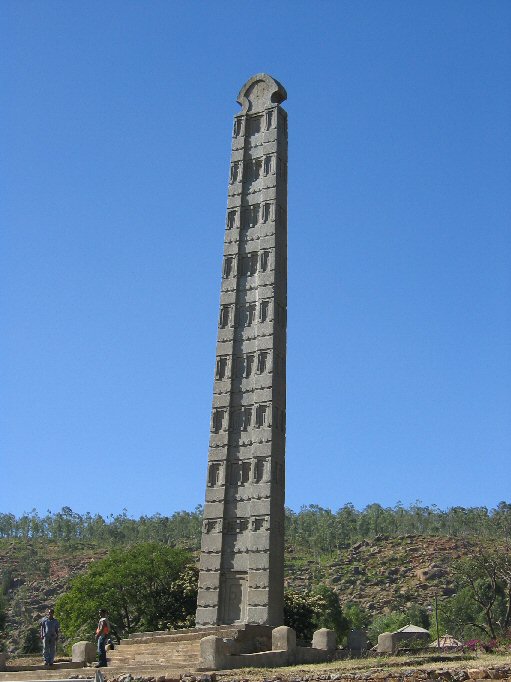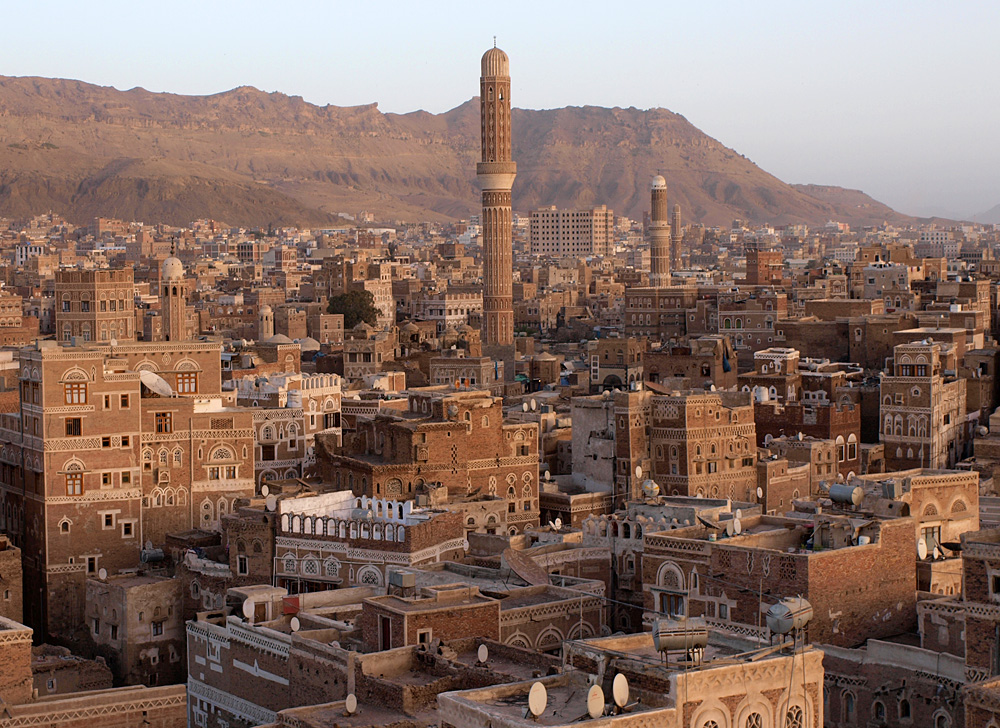|
Dʿmt
Dʿmt (Unvocalized Ge'ez: ደዐመተ, ''DʿMT'' theoretically vocalized as ዳዓማት, *''Daʿamat'' or ዳዕማት, *''Daʿəmat'') was an Ethio- Sabaean kingdom located in present-day Eritrea and the northern Tigray region of Ethiopia. The exact dates of its existence remain unknown. However, a timeframe spanning from the end of the 8th century BC to the 6th century BC is a hypothesis. Few inscriptions by or about this kingdom survive, and very little archaeological work has taken place. As a result, it is not known whether Dʿmt ended as a civilization before the Kingdom of Aksum's early stages, evolved into the Aksumite state, or was one of the smaller states united in the Kingdom of Aksum, possibly around 150 BC. History Given the presence of a large temple complex, the capital of Dʿmt may have been present-day Yeha, in Tigray Region, Ethiopia. At Yeha, the temple to the god Ilmuqah is still standing. The kingdom developed irrigation schemes, used plows, grew mi ... [...More Info...] [...Related Items...] OR: [Wikipedia] [Google] [Baidu] |
Ethiopia
Ethiopia, officially the Federal Democratic Republic of Ethiopia, is a landlocked country located in the Horn of Africa region of East Africa. It shares borders with Eritrea to the north, Djibouti to the northeast, Somalia to the east, Kenya to the south, South Sudan to the west, and Sudan to the northwest. Ethiopia covers a land area of . , it has around 128 million inhabitants, making it the List of countries and dependencies by population, thirteenth-most populous country in the world, the List of African countries by population, second-most populous in Africa after Nigeria, and the most populous landlocked country on Earth. The national capital and largest city, Addis Ababa, lies several kilometres west of the East African Rift that splits the country into the African Plate, African and Somali Plate, Somali tectonic plates. Early modern human, Anatomically modern humans emerged from modern-day Ethiopia and set out for the Near East and elsewhere in the Middle Paleolithi ... [...More Info...] [...Related Items...] OR: [Wikipedia] [Google] [Baidu] |
Eritrea
Eritrea, officially the State of Eritrea, is a country in the Horn of Africa region of East Africa, with its capital and largest city being Asmara. It is bordered by Ethiopia in the Eritrea–Ethiopia border, south, Sudan in the west, and Djibouti in the southeast. The northeastern and eastern parts of Eritrea have an extensive coastline along the Red Sea. The nation has a total area of approximately , and includes the Dahlak Archipelago and several of the Hanish Islands. Hominid remains found in Eritrea have been dated to 1 million years old and anthropological research indicates that the area may contain significant records related to the evolution of humans. The Kingdom of Aksum, covering much of modern-day Eritrea and Tigray Region, northern Ethiopia, was established during the first or second century AD.Henze, Paul B. (2005) ''Layers of Time: A History of Ethiopia'', . It adopted Eritrean Orthodox Church, Christianity around the middle of the fourth century. Beginning in ... [...More Info...] [...Related Items...] OR: [Wikipedia] [Google] [Baidu] |
History Of Ethiopia
Ethiopia is one of the oldest countries in Africa; the emergence of Ethiopian civilization dates back thousands of years. Abyssinia or rather "Ze Etiyopia" was ruled by the Semitic Abyssinians (Habesha) composed mainly of the Amhara, Tigrayans and the Cushitic Agaw. In the Eastern escarpment of the Ethiopian highlands and more so the lowlands were the home of the Harari/Harla that founded Sultanates such as Ifat and Adal and the Afars. In the central and south were found the ancient Sidama and Semitic Gurage, among others. One of the first kingdoms to rise to power in the territory was the kingdom of D'mt in the 10th century BC, which established its capital at Yeha. In the first century AD, the Aksumite Kingdom rose to power in the modern Tigray Region with its capital at Aksum and grew into a major power on the Red Sea, subjugating South Arabia and Meroe and its surrounding areas. In the early fourth century, during the reign of Ezana, Christianity was declared the state ... [...More Info...] [...Related Items...] OR: [Wikipedia] [Google] [Baidu] |
Tigray
The Tigray Region (or simply Tigray; officially the Tigray National Regional State) is the northernmost Regions of Ethiopia, regional state in Ethiopia. The Tigray Region is the homeland of the Tigrayan, Irob people, Irob and Kunama people. Its capital and largest city is Mekelle. Tigray is the fifth-largest by area, the fourth-most populous, and the fifth-most densely populated of the 11 regional states. Tigray is bordered by Eritrea to the north, the Amhara Region to the south, the Afar Region to the east, and Sudan to the west. Tigray's official language is Tigrinya language, Tigrinya, similar to that of southern Eritrea. The Tigray region had an estimated pre-war population of 7,070,260. The majority of the population (c. 80%) are farmers, contributing 46% to the regional gross domestic product (2009). The highlands have the highest population density, especially in Misraqawi Zone, eastern and Maekelay Zone, central Tigray. The much less densely populated lowlands comprise ... [...More Info...] [...Related Items...] OR: [Wikipedia] [Google] [Baidu] |
History Of Eritrea
Eritrea is an ancient name, associated in the past with its Greek form ''Erythraia'', Ἐρυθραία, and its derived Latin form ''Erythræa''. This name relates to that of the Red Sea, then called the ''Erythræan Sea'', from the Greek for "red", ἐρυθρός, ''erythros''. But earlier Eritrea was called Mdre Bahri. The Italians created the colony of Eritrea in the 19th century around Asmara and named it with its current name. After World War II, Eritrea was annexed to Ethiopia. Following the communist Ethiopian government's defeat in 1991 by the coalition created by armed groups notably the EPLF, Eritrea declared its independence. Eritrea officially celebrated its 1st anniversary of independence on May 24, 1993. Prehistory At Buya in Eritrea, one of the oldest hominids representing a possible link between ''Homo erectus'' and an archaic ''Homo sapiens'' was discovered by Eritrean and Italian scientists. Dated to over 1 million years old, it is the oldest skeletal find ... [...More Info...] [...Related Items...] OR: [Wikipedia] [Google] [Baidu] |
Sabaeans
Sheba, or Saba, was an ancient South Arabian kingdom that existed in Yemen from to . Its inhabitants were the Sabaeans, who, as a people, were indissociable from the kingdom itself for much of the 1st millennium BCE. Modern historians agree that the heartland of the Sabaean civilization was located in the region around Marib and Sirwah. In some periods, they expanded to much of modern Yemen and even parts of the Horn of Africa, particularly Eritrea and Ethiopia. The kingdom's native language was Sabaic, which was a variety of Old South Arabian. Stuart Munro-Hay, ''Aksum: An African Civilization of Late Antiquity'', 1991. Among South Arabians and Abyssinians, Sheba's name carried prestige, as it was widely considered to be the birthplace of South Arabian civilization as a whole. The first Sabaean kingdom lasted from the 8th century BCE to the 1st century BCE: this kingdom can be divided into the " mukarrib" period, where it reigned supreme over all of South Arabia; and the ... [...More Info...] [...Related Items...] OR: [Wikipedia] [Google] [Baidu] |
Sheba
Sheba, or Saba, was an ancient South Arabian kingdoms in pre-Islamic Arabia, South Arabian kingdom that existed in Yemen (region), Yemen from to . Its inhabitants were the Sabaeans, who, as a people, were indissociable from the kingdom itself for much of the 1st millennium BCE. Modern historians agree that the heartland of the Sabaean civilization was located in the region around Marib and Sirwah. In some periods, they expanded to much of Yemen, modern Yemen and even parts of the Horn of Africa, particularly Eritrea and Ethiopia. The kingdom's native language was Sabaic, which was a variety of Old South Arabian.Stuart Munro-Hay, ''Aksum: An African Civilization of Late Antiquity'', 1991. Among South Arabia, South Arabians and Abyssinia, Abyssinians, Sheba's name carried prestige, as it was widely considered to be the birthplace of South Arabian civilization as a whole. The first Sabaean kingdom lasted from the 8th century BCE to the 1st century BCE: this kingdom can be divided i ... [...More Info...] [...Related Items...] OR: [Wikipedia] [Google] [Baidu] |
Kingdom Of Aksum
The Kingdom of Aksum, or the Aksumite Empire, was a kingdom in East Africa and South Arabia from classical antiquity to the Middle Ages, based in what is now northern Ethiopia and Eritrea, and spanning present-day Djibouti and Sudan. Emerging from the earlier Dʿmt civilization, the kingdom was founded in the first century. The city of Axum served as the kingdom's capital for many centuries until it relocated to Kubar in the ninth century due to declining trade connections and recurring invasions. The Kingdom of Aksum was considered one of the four great powers of the third century by the Persian prophet Mani, alongside Persia, Rome, and China. Aksum continued to expand under the reign of Gedara (), who was the first king to be involved in South Arabian affairs. His reign resulted in the control of much of western Yemen, such as the Tihama, Najran, al-Ma'afir, Zafar, Yemen, Zafar (until ), and parts of Hashid territory around Khamir, Yemen, Hamir in the northern Geogra ... [...More Info...] [...Related Items...] OR: [Wikipedia] [Google] [Baidu] |
Mukarrib
Mukarrib (Old South Arabian: , romanized: ) is a title used by rulers in ancient South Arabia. It is attested as soon as continuous epigraphic evidence is available and it was used by the kingdoms of Saba, Hadhramaut, Qataban, and Awsan. The title is also found on Sabaic inscriptions from Ethiopia. The title ''mukarrib'' has no equivalent in other Near Eastern societies and it was not used in the Christian era. The ''mukarrib'' is only cited when he is the author of the document, but not on legal documents, where the issuer is called the "king of Saba" or the "king of Qataban" instead. The title occurs very early both in Saba and Awsan, and it is not clear which one borrowed it from the other. In Qataban, the ''mukarrib'' title only occurs in territories on the southern plateau. Qatabanian ''mukarribs'' carried out many functions: they performed holy hunting in the valleys of the kingdom, they guided the army during war, they built the walls and gates of the capital, conquered an ... [...More Info...] [...Related Items...] OR: [Wikipedia] [Google] [Baidu] |
Yeha
Yeha ( ''yiḥa'', older ESA 𐩥𐩢 '; Old South Arabian: 𐩺𐩢𐩱 ') is a town in the northern Central Zone, Tigray in Ethiopia. It likely served as the capital of the pre- Aksumite kingdom of Dʿmt. Archeology The oldest standing structure in Ethiopia, the Temple of Yeha, is located in Tigray region. This is a tower built in the Sabaean style, and dated through comparison with ancient structures in South Arabia to around 700 BC. Although no radiocarbon dating testing has been performed on samples from site, this date for the Great Tower is supported by local inscriptions.David W. Phillipson, ''Ancient Churches of Ethiopia'' (New Haven: Yale University Press, 2009), p. 36 David Phillipson attributes its "excellent preservation" to two factors, "the care with which its original builders ensured a level foundation, firmly placed on the uneven bedrock; and to its rededication -- perhaps as early as the sixth century AD -- for use as a Christian church." Two other arch ... [...More Info...] [...Related Items...] OR: [Wikipedia] [Google] [Baidu] |






